Mitsubishi Electronics P93DW, P93DE User Manual
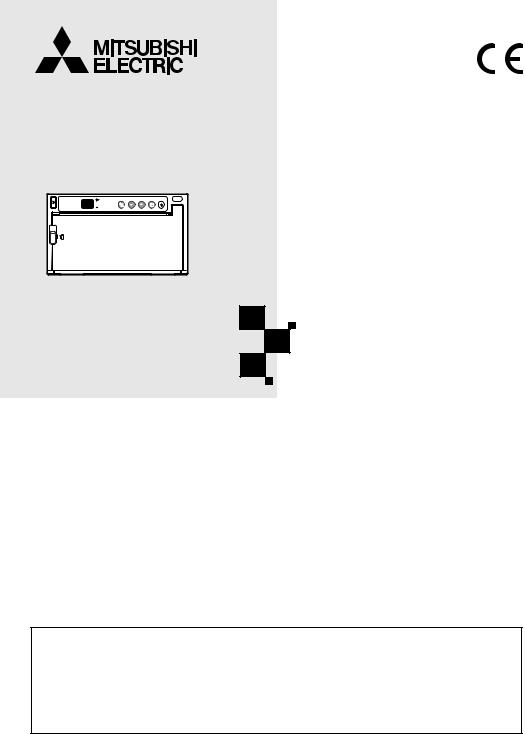
DIGITALMONOCHROMEPRINTER
MODEL
P93DW
P93DE
OPERATION MANUAL
BRT |
BRT/CONT DOWN UP LOCK FEED |
COPY |
 CONT
CONT



 LOCK
LOCK
OPEN
THIS OPERATION MANUAL IS IMPORTANT
TO YOU.
PLEASE READ IT BEFORE USING YOUR
DIGITAL MONOCHROME PRINTER.
DIGITAL MONOCHROME PRINTER 
This digital monochrome printer complies with the requirements of the EC Directive 89/ 336/EEC, 73/23/EEC, 93/42/EEC and 93/68/EEC.
The electro-magnetic susceptibility has been chosen at a level that gains proper operation in residential areas, on business and light industrial premises and on smallscale enterprises, inside as well as outside of the buildings. All places of operation are characterised by their connection to the public low voltage power supply system.

FOR THE MODEL P91DW(UB) ONLY
WARNING:
In the USA or Canada, use the AC power cord according to the recommendations as below, in order to comply with UL2601-1 and CAN/CSA C22.2 No. 601.1.
Case 1. Connect to the 120V receptacle of the room or the host equipment.
The AC power cord should be UL or CSA approved and consist of type SJT, size 16 or 18AWG, length 2.5m or shorter cord with IEC320/C13 type, 125V 10A or higher rating connector and NEMA 5-15 type, 125V 10A or higher rating, Hospital Grade plug.
Case 2. Connect to the 230V receptacle of the room or the host equipment.
The AC power cord should be UL or CSA approved and consist of type SJT, size 16 or 18AWG, length 2.5m or shorter cord with IEC320/C13 type, 250V 10A or higher rating connector and NEMA 6-15 type, 250V 10A or higher rating, Hospital Grade plug.
Case 3. Connect to the 120V receptacle of the host equipment.
The AC power cord should be UL or CSA approved and consist of type SJT, size 16 or 18AWG, length 2.5m or shorter cord with IEC320/C13 type, 125V 10A or higher rating connector and IEC320-2.2/E type, 125V 10A or higher rating plug.
Case 4. Connect to the 230V receptacle of the host equipment.
The AC power cord should be UL or CSA approved and consist of type SJT, size 16 or 18AWG, length 2.5m or shorter cord with IEC320/C13 type, 250V 10A or higher rating connector and IEC320-2.2/E type, 250V 10A or higher rating plug.
CAUTION:
Changes or modifications not expressly approved by the party responsible for compliance could void the user’s authority to operate the equipment.
NOTE:
This equipment has been tested and found to comply with the limits for a Class A digital device, pursuant to Part 15 of the FCC Rules.
These limits are designed to provide reasonable protection against harmful interference when the equipment is operated in a commercial environment. This equipment generates, uses, and can radiate radio frequency energy and, if not installed and used in accordance with the instruction manual, may cause harmful interference to radio communications.
Operation of this equipment in a residential area is likely to cause harmful interference in which case the user will be required to correct the interference at his or her own expense.
Information:
This class A digital apparatus complies with Canadian ICES-003.
"CLASSIFIED BY UNDERWRITERS LABORATORIES INC.®
WITH RESPECT TO ELECTRIC SHOCK, FIRE AND MECHANICAL HAZARDS ONLY IN ACCORDANCE WITH UL2601-1 AND CAN/CSA C22.2 No. 601.1"
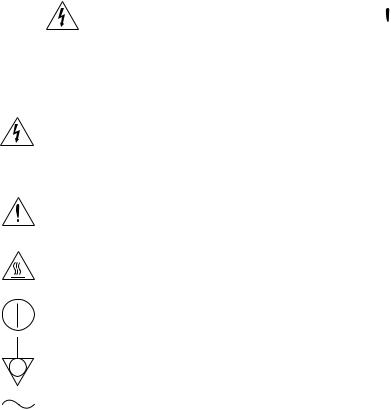
CAUTION:
RISK OF ELECTRIC SHOCK DO NOT OPEN. 
TO REDUCE THE RISK OF ELECTRIC SHOCK,DO NOT REMOVE COVER (OR BACK)
NO USER-SERVICEABLE PARTS INSIDE. REFER SERVICING TO QUALIFIED SERVICE PERSONNEL.
The lightning flash with arrowhead symbol, within an equilateral triangle, is intended to alert the user to the presence of uninsulated "dangerous voltage" within the product's enclosure that may be of sufficient magnitude to constitute a risk of electric shock.
The exclamation point within an equilateral triangle is intended to alert the user to the presence of important operating and maintenance (servicing) instructions in the literature accompanying the appliance.
The “Caution, hot surface” symbol indicates that the marked item may be hot and should not be touched.
The “ON/OFF” symbol indicates connection to or disconnection from the mains, at least for mains switches.
The “Equipotentiality” symbol identifies the terminals connected each other. The potential of various parts of equipment or of a system is equalized.
The “Alternating current” symbol indicates that the equipment is suitable for alternating current only.
When you dispose of the unit or accessories, you must obey the law in the relative area or country and/or regulation in the relative hospital.
WARNING:
Install and use this appliance in accordance with the operation manual for safety and EMC (Electromagnetic Compatibility). If it is not installed and used in accordance with the operation manual, it may cause interference to other equipment and/or other risk.
To prevent fire or shock hazard, do not expose this appliance to rain or moisture.
This appliance must be earthed.
In Europe, use the AC power cord according to the recommendations as below, in order to comply with EN60601-1 and EN60950.
Connect to the 230V receptacle of the room or the host equipment.
The AC power cord should be VDE approved and consist of core size 1mm2 or bigger, length 2.5m or shorter cord with IEC320/C13 type, 250V 10A or higher rating connector and CEE(7)VII type or IEC 320-2.2/E type, 250V 10A or higher rating plug.
Use the USB cable according to the recommendations as below, in order to comply with EN60601-1-2.
The USB cable with appropriate plug should be 2 m long or shorter, comply with USB 2.0 standard High speed requirements and USB IF (USB Implementers Forum) approved.
This product is to be employed with medical equipment, just for reference purpose, not for medical diagnostic purpose.
INSTRUCTIONS FOR MEDICAL USE
<according to the Medical Safety/EMC standard IEC/EN 60601-1-2>
MEDICAL ELECTRICAL EQUIPMENT needs special precautions regarding EMC and needs to be installed and put into service according to the EMC information provided in the ACCOMPANYING DOCUMENTS.
Portable and mobile RF communications equipment can affect MEDICAL ELECTRICAL EQUIPMENT.
Technical description
List of all cables and maximum length of the cable and transducers and other ACCECCORIES
|
Maximum length |
Reference page in this operation manual |
|
|
|
AC power cord |
2.5 m |
This page, the previous pages for safety and page 22 |
|
|
for accessories |
|
|
|
USB cable |
2 m |
This page, the previous pages for safety and page 22 |
|
|
for accessories |
|
|
|
Thermal paper |
|
Page 3 for thermal paper, Page 22 for accessories |
|
|
|
WARNING:
The use of ACCESSORIES, transducers and cables other than those specified, with the exception of transducers and cables sold by the manufacturer of the Model P93DW/P93DE as replacement parts for internal components, may result in increased EMISSIONS or decreased IMMUNITY of the Model P93DW/P93DE.
WARNING:
The Model P93DW/P93DE should not be used adjacent to or stacked with other equipment and that if adjacent or stacked use is necessary, the Model P93DW/P93DE should be observed to verify normal operation in the configuration in which it will be used.
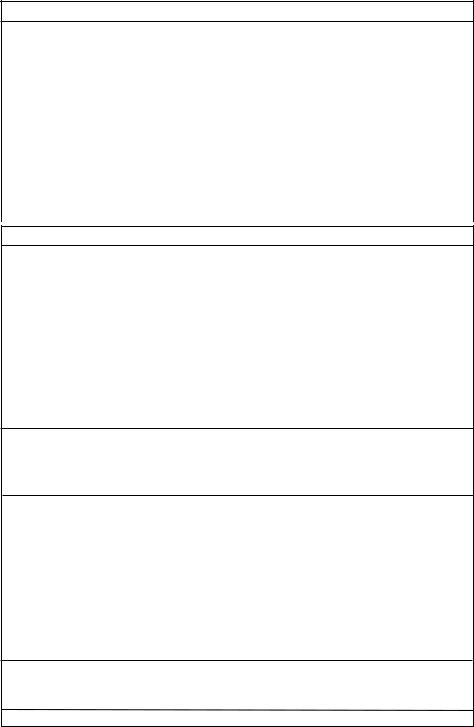
Guidance and manufacturer's declaration - electromagnetic emissions
The Model P93DW/P93DE is intended for use in the electromagnetic environment specified below. The customer or user of the Model P93DW/P93DE should assure that it is used in such an environment.
|
Emission test |
Compliance |
Electromagnetic environment - guidance |
|
RF emissions |
Group 1 |
The Model P93DW/P93DE uses RF energy only for its |
|
CISPR 11/EN 55011 |
|
internal function. Therefore, its RF emissions are very |
|
|
|
low and are not likely to cause interference in nearby |
|
|
|
electronic equipment. |
|
|
|
|
|
RF emissions |
Class B |
The Model P93DW/P93DE is suitable for use in all |
|
CISPR 11/EN 55011 |
|
establishments, including domestic establishments |
|
Harmonic emissions |
Class A |
and those directly connected to public low-voltage |
|
IEC/EN 61000-3-2 |
|
power supply network that supplies buildings used for |
|
Voltage fluctuations / |
Complies |
domestic purpose. |
|
flicker emissions |
|
|
|
IEC/EN 61000-3-3 |
|
|
Guidance and manufacturer's declaration - electromagnetic immunity
The Model P93DW/P93DE is intended for use in the electromagnetic environment specified below. The customer or user of the Model P93DW/P93DE should assure that it is used in such an environment.
Immunity test |
IEC/EN 60601 |
Compliance |
Electromagnetic environment - guidance |
||||
|
test level |
level |
|
|
|||
Electrostatic |
± |
6 kV contact |
± |
6 kV contact |
Floors should be wood, concrete or |
||
discharge (ESD) |
± |
8 kV air |
± |
8 kV air |
ceramic tile. If floors are covered with |
||
IEC/EN 61000-4-2 |
|
|
|
|
synthetic material, the relative humidity |
||
|
|
|
|
|
should be at least 30%. |
||
|
|
|
|
|
|||
Electrical fast |
± 2 kV for power |
± 2 kV for power |
Mains power quality should be that of a |
||||
transient/burst |
supply lines |
supply lines |
typical commercial or hospital |
||||
IEC/EN 61000-4-4 |
± 1 kV for input |
± 1 kV for input |
environment. |
||||
|
|
|
|||||
|
/output lines |
/output lines |
|
|
|||
|
|
|
|
|
|
|
|
Surge |
± |
1 kV |
± |
1 kV |
Mains power quality should be that of a |
||
IEC/EN 61000-4-5 |
differential |
differential |
typical commercial or hospital |
||||
|
mode |
mode |
environment. |
||||
|
± |
2 kV common |
± |
2 kV common |
|
|
|
|
mode |
mode |
|
|
|||
|
|
|
|
|
|||
Voltage dips, short |
< 5% UT |
< 5% UT |
Mains power quality should be that of a |
||||
interruptions and |
(> 95% dip in UT) |
(> 95% dip in UT) |
typical commercial or hospital |
||||
voltage variations |
for 0,5 cycle |
for 0,5 cycle |
environment. If the user of the Model |
||||
on power supply |
40% UT |
40% UT |
P93DW/P93DE requires continued |
||||
input lines |
operation during power mains |
||||||
(60% dip in UT) |
(60% dip in UT) |
||||||
IEC/EN 61000-4-11 |
interruptions, it is recommended that the |
||||||
|
for 5 cycles |
for 5 cycles |
Model P93DW/P93DE be powered from |
||||
|
70% UT |
70% UT |
|||||
|
an uninterruptible power supply or a |
||||||
|
(30% dip in UT) |
(30% dip in UT) |
battery. |
||||
|
for 25 cycles |
for 25 cycles |
|
|
|||
|
< 5% UT |
< 5% UT |
|
|
|||
|
(> 95% dip in UT) |
(> 95% dip in UT) |
|
|
|||
|
for 5 sec. |
for 5 sec. |
|
|
|||
|
|
|
|
|
|||
Power frequency |
3 A/m |
3 A/m |
Power frequency magnetic fields should |
||||
(50/60 Hz) |
|
|
|
|
be at levels characteristic of a typical |
||
magnetic field |
|
|
|
|
commercial or hospital environment. |
||
IEC/EN 61000-4-8 |
|
|
|
|
|
|
|
NOTE UT is the a.c. mains voltage prior to application of the test level.
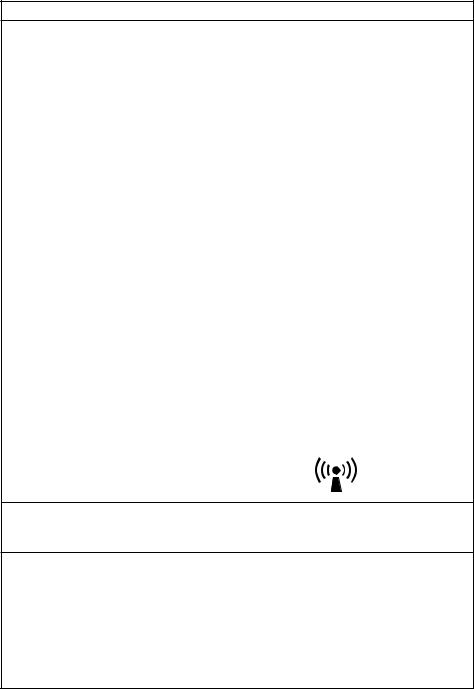
Guidance and manufacturer's declaration - electromagnetic immunity
The Model P93DW/P93DE is intended for use in the electromagnetic environment specified below. The customer or user of the Model P93DW/P93DE should assure that it is used in such an environment.
Immunity test |
IEC/EN 60601 |
Compliance |
Electromagnetic environment - guidance |
||
|
test level |
level |
|
|
|
|
|
|
Portable and mobile RF communications |
||
|
|
|
equipment should be used no closer to |
||
|
|
|
any part of the Model P93DW/P93DE, |
||
|
|
|
including cables, than the recommended |
||
|
|
|
separation distance calculated from the |
||
|
|
|
equation applicable to frequency of the |
||
|
|
|
transmitter. |
||
|
|
|
Recommended separation distance |
||
Conducted RF |
3 Vrms |
3 Vrms |
d=1,2√ P |
||
IEC/EN 61000-4-6 |
150 kHz to 80 |
|
|
|
|
|
MHz |
|
|
|
|
|
|
|
d=1,2√ |
|
80 MHz to 800 MHz |
Radiated RF |
3 V/m |
3 V/m |
P |
||
IEC/EN 61000-4-3 |
80 MHz to 2,5 |
|
d=2,3√ |
|
800 MHz to 2,5 GHz |
|
P |
||||
|
GHz |
|
where P is the maximum output power |
||
|
|
|
|||
|
|
|
rating of the transmitter in watts (W) |
||
|
|
|
according to the transmitter manufacturer |
||
|
|
|
and d is the recommended separation |
||
|
|
|
distance in meters (m). |
||
|
|
|
Field strengths from fixed RF |
||
|
|
|
transmitters, as determined by an |
||
|
|
|
electromagnetic site survey,a should be |
||
|
|
|
less than the compliance level in each |
||
|
|
|
frequency range.b |
||
|
|
|
Interference may occur in the vicinity of |
||
|
|
|
equipment marked with the following |
||
|
|
|
symbol: |
||
|
|
|
|
|
|
NOTE1. At 80 MHz and 800 MHz, the higher frequency range applies.
NOTE2. These guidelines may not apply in all situations. Electromagnetic propagation is affected by absorption and reflection from structures, objects and people.
aField strengths from fixed transmitters, such as base stations for radio (cellular/cordless) telephones and land mobile radios, amateur radio, AM and FM radio broadcast and TV broadcast cannot be predicted theoretically with accuracy. To assess the electromagnetic environment due to fixed RF transmitters, an electromagnetic site survey should be considered. If the measured field strength in the location in which the Model P93DW/P93DE is used exceeds the applicable RF compliance level above, the Model P93DW/P93DE should be observed to verify normal operation. If abnormal performance is observed, additional measures may be necessary, such as reorienting or relocating the Model P93DW/P93DE.
bOver the frequency range 150 kHz to 80 MHz, field strength should be less than 3 V/m.
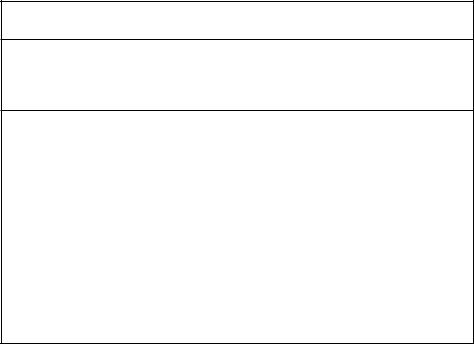
Recommended separation distances between
Portable and mobile RF communications equipment and the Model P93DW/P93DE
The Model P93DW/P93DE is intended for use in the electromagnetic environment in which radiated RF disturbances are controlled. The customer or user of the Model P93DW/P93DE can help prevent electromagnetic interference by maintaining a minimum distance between portable and mobile RF communications equipment (transmitters) and the Model P93DW/P93DE as recommended below, according to the maximum output power of the communications equipment.
Rated maximum output |
Separation distance according to frequency of transmitter |
||||||||
power of transmitter |
|
|
|
m |
|
|
|
||
W |
150 kHz to 80 MHz |
80 MHz to 800 MHz |
800 MHz to 2,5 GHz |
||||||
|
d=1,2√ |
|
|
d=1,2√ |
|
|
d=2,3√ |
|
|
|
P |
|
P |
|
P |
||||
0,01 |
0,12 |
|
|
0,12 |
|
|
0,23 |
|
|
0,1 |
0,38 |
|
|
0,38 |
|
|
0,73 |
|
|
1 |
1,2 |
|
|
1,2 |
|
|
2,3 |
|
|
|
|
|
|
|
|
|
|
|
|
10 |
3,8 |
|
|
3,8 |
|
|
7,3 |
|
|
100 |
12 |
|
|
12 |
|
|
23 |
|
|
For transmitters rated at maximum output power not listed above, the recommended separation distance d in meters (m) can be estimated using the equation applicable to the frequency of the transmitter, where P is the maximum output power rating of the transmitter in watts (W) according to the transmitter manufacturer.
NOTE1. At 80 MHz and 800 MHz, the separation distance for higher frequency range applies.
NOTE2. These guidelines may not apply in all situations. Electromagnetic propagation is affected by absorption and reflection from structures, objects and people.

1 CONTENTS |
|
1 CONTENTS ................................................................. |
1 |
2 PRECAUTIONS ..................................................... |
2 - 4 |
3 UNPACKING ................................................................ |
5 |
4 FEATURES AND FUNCTIONS .............................. |
6 - 7 |
Front Panel .......................................................................................... |
6 |
Rear Panel ........................................................................................... |
7 |
5 INSTALLATION OF PAPER ................................... |
8 - 9 |
6 EXAMPLE OF CONNECTION / |
|
SETTING OF SWITCHES.......................................... |
10 |
7 PRINTING ........................................................... |
11 - 12 |
8 ADJUSTMENT OF PRINT PICTURE ................. |
13 - 15 |
9 ERROR DISPLAY ............................................... |
16 - 18 |
A STATUS AND MODES .............................................. |
19 |
B USE OF CLEANING PAPER ..................................... |
20 |
C MAINTENANCE......................................................... |
21 |
D SPECIFICATIONS ..................................................... |
22 |
1
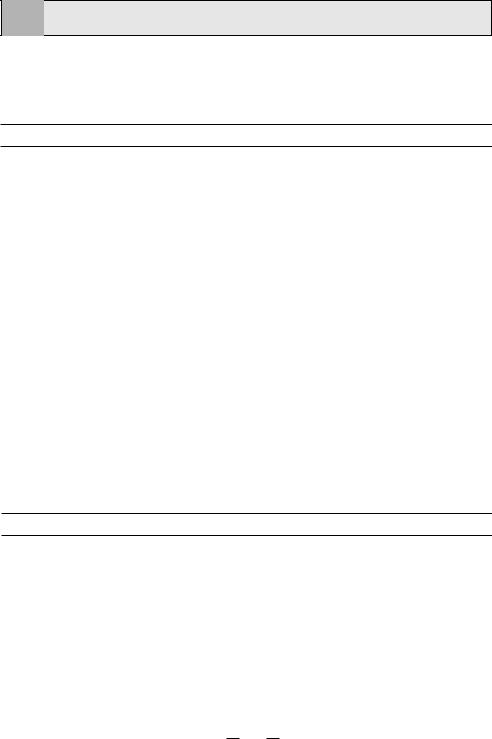
2  PRECAUTIONS
PRECAUTIONS
In the interest of safety, please observe the following precautions:
POWER REQUIREMENT
This digital monochrome printer is designed for operation on 100-240V AC 50/60Hz. Never connect to any outlet or power supply having a different voltage or frequency.
WARNING : THIS APPARATUS MUST BE EARTHED. AVERTISSEMENT : CET APPAREIL DOIT ETRE MIS A LA TERRE.
This equipment is classified as class 1, according to the type of protection against electric shock.
PROTECTIVE MEASURES
IF ABNORMALITIES ARISE, . . .
Use of the unit during emission of smoke or abnormal sounds (without adopting countermeasures) is dangerous. In such a case, unplug the power cord from the source outlet immediately, and request maintenance services from the sales dealer.
NEVER INSERT ANY OBJECT INTO THE UNIT
Foreign objects of any kind inserted into this unit constitute a safety hazard and can cause extensive damage.
If any object should be inserted into the unit, unplug the power cord, then contact the sales dealer.
DO NOT PLACE ANYTHING ON THE UNIT
Heavy objects placed on the unit can cause damage or obstruct proper ventilation.
PROTECT THE POWER CORD
Damage to the power cord may cause fire or shock hazard. When unplugging, hold by the plug only and remove carefully.
Never put heavy objects on the power cord. The cord may be damaged causing a fire or electric shock.
DO NOT PLACE WATER CONTAINERS ON THE UNIT
Do not place flower vases, and other water-holding containers on the unit. If, for some reason, water seeps to the inside of the unit, unplug the power cord from the source outlet, and contact the sales dealer. If used without corrective measures, the unit may be damaged.
DO NOT REMOVE THE CABINET
Touching internal parts is dangerous or may lead to malfunction. Contact the sales dealer to carry out internal checks and/or adjustments. Before opening the cover to clear a paper jam, etc., be sure to disconnect the power cord plug.
DO NOT ATTACH A SCREW MORE THAN 6MM LONG ON THE BOTTOM
If a screw more than 6 mm long is attached on the bottom of the printer, it may cause internal damage.
PROTECT AGAINST DEW FORMATION
In extremely cold regions, if the unit is moved quickly from an extremely cold place to a warmer one, dew is likely to be formed. If dew is formed, printing is not possible.
OPERATING AMBIENT TEMPERATURE RANGE
The operating ambient temperature range is 5° C-40° C (41° F-104° F), and humidity of 20-80%.
BE CAREFUL AROUND PRINT PAPER EXIT SLOT
Do not insert your hand or any material into the paper exit slot during printing.
Do not touch the cutter blade inside the paper exit slot. Otherwise, your finger will be injured.
DO NOT TOUCH THE THERMAL HEAD AND CUTTER
Do not touch the thermal head (located inside the unit) and the cutter blade.
The thermal head is heated to high temperature. This may cause injury.
INSTALLATION LOCATIONS
MAINTAIN GOOD VENTILATION
Ventilation slots and holes are provided on sides of this unit.
Place the unit on a hard and level surface and locate at least 4" (10cm) from walls to ensure proper ventilation.
UNSUITABLE LOCATIONS
Avoid shaky places or hot-springs areas where hydrogen sulfide and acidic ions are likely to be generated.
PLACES WITH HIGH HUMIDITY AND DUST
Do not place the unit at locations with high humidity and/ or dust. They can cause extensive damage.
Avoid places where the unit is likely to contact oily fumes and vapors.
PLACES LIKELY TO BE EXTREMELY HOT
Places exposed to direct sunlight, or near heating appliances can attain extremely high temperatures, which may deform the cabinet, or can become a prime cause of damage.
SET THE UNIT ON A FLAT SURFACE
Do not use the unit when inclined ± 20° in vertical or horizontal direction, or in an unstable place.
Uneven surfaces may disturb paper feeding or ventilation, or affect the performance of the unit.
2
